
| 19 Oct, 2024 |
||||||||||||||||||||||||||||||||||||||||||||||||||||||||||||||||||||||||||||||||||||||||||||||||||||||||||||||||||||||||||||
| Ferrari F80 |
||||||||||||||||||||||||||||||||||||||||||||||||||||||||||||||||||||||||||||||||||||||||||||||||||||||||||||||||||||||||||||
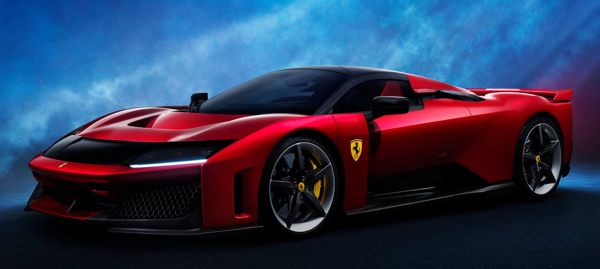 The successor to 288GTO, F40, F50, Enzo and LaFerrari is called F80, although it is 3 years too early to accelebrate Ferrari's 80th anniversary. Designed inhouse under the direction of design chief Flavio Manzoni like all the current generation Ferraris, it is not the most attractive shape I would say. It looks a bit too long and too flat, more like dimensioned and shaped to work well in Hypercar class racing. The passenger cell is particularly narrow and low - its height is only 1138 mm, significantly lower than Lamborghini Revuelto and McLaren W1 - obviously to reduce frontal area hence drag. Ditto the S-duct which occupies the entire front of the car (there's no front luggage compartment) to generate as much as 460 kg of downforce. Speaking of downforce, the F80 can generate 1050 kg at 155 mph, slightly more than McLaren W1 managed at 174 mph, so it is clearly superior. The distribution of downforce is 44:56 front to rear, very close to the car's static weight distribution of 42:58. There is a big rear wing which normally sits flush at the tail. It rises and tilts at high downforce configuration, but never stands as tall as the signature rear wing of F40. In fact, it contributes to only 30 percent of the rear downforce, while the lion's share come from the underbody, in particular the massive, 1.8 meter long diffusers. Ferrari even has its powertrain set at a 1.3 degree incline angle to make space underneath for the diffusers. 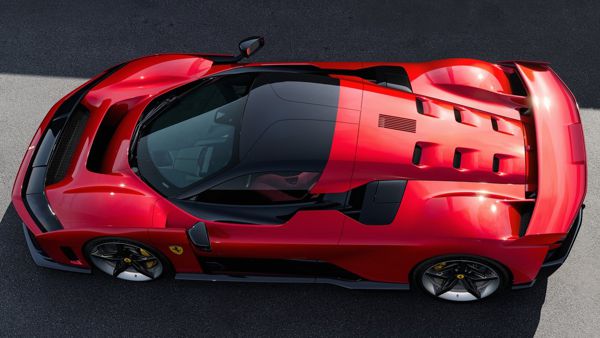 To optimize ground effect, the F80 employs active suspension by Multimatic like its Purosanque crossover. Each active damper features an electric motor which can apply up to 500 kg of force to push up or down the suspension. This allows adjustable ride height as well as keeping the car flat in cornering and over undulations. It goes without saying this is the first hypercar, or just about any road-going sports car, employ active suspension. It should give the F80 a significant advantage on both road and track. On the downside, the F80 is far from a lighweight. Its dry weight is quoted at 1525 kg, slightly lighter than the production SF90 XX, quite a lot lighter than Lamborghini Revuelto but no where near the 1399 kg dry weight of McLaren W1. The active suspension is one reason, but most crucial is the 3-motor hybrid system, which gives the Ferrari the function of all-wheel drive and front axle torque-vectoring. In contrast, the Mclaren employs only a rear motor, lacking the sophistication of Ferrari. 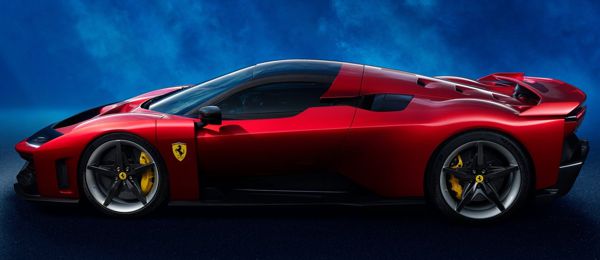 Ferrari worked quite hard to cut weight from its hybrid system. It employs the latest 800V architecture, which means lower current hence narrower windings and cables can be used. A converter steps down the voltage to 48V and 12V for the consumption of active suspension and other electrical systems, respectively, so that it doesn't require another battery. The front axle consists of 2 motors - built by Ferrari itself for the first time in its new factory - silicone-carbide inverter and integrated cooling. They can rev to a remarkable 30,000 rpm and produce 142 hp each. The entire front e-axle weighs 61.5 kg, 14 kg less than that of the SF90. At the rear, sandwiched between the engine and 8-speed DCT is another motor. It contributes 95 hp and works as generator as well during regenerative braking to charge up the battery, also doubles as the engine starter. However, the total electrical output is limited to 300 hp by the battery system, not exactly the sum of 3 motors.  To cut weight, the F80 employs a pretty small lithium-ion battery. Its capacity is just 2.3kWh, down from 7.9kWh on SF90. The battery pack employs carbon-fiber in its protective casing and weighs only 39 kg, compared with 72 kg on SF90. It sits behind the cockpit on floor level, just fore of the engine. Because of the smaller battery, the F80 cannot be driven in zero-emission mode. You get only "Hybrid", "Performance" and "Qualify" mode to choose from. The F80 employs a 3.0-liter twin-turbo V6 engine developed from the 296GTB. This is quite surprising, because the cheaper SF90 uses V8 and the company's range-topping supercars have never employed anything fewer than 8 cylinders. However, from performance and packaging point of view it is easier to understand. The F163CF engine is the most sophsticated engine developed by Maranello. It is short and compact, leaving space for battery and large diffusers. It is also extremely powerful, producing an astonishing 900 horsepower alone or a specific output of 300 hp per liter! That overwhelms the V8 motor of SF90 XX by more than a hundred horsepower. It can rev to 9200 rpm, thanks to titanium con-rods, DLC-coated crankpins, machined crankshaft, lightened counter weights etc.  300 hp per liter implies the V6 employs very high boost pressure. To avoid the resultant turbo lag, the F163CF employs a pair of electrical turbochargers inside its 120-degree V-valley. As in F1 engines, each turbo has a thin electric motor added between the exhaust gas turbine and compressor wheel. It quickens the spool up in acceleration and works as generator in braking to recapture exhaust energy, or in F1's language, MGU-H. This allows the use of larger turbines without adding turbo lag. Despite the heavier turbos, Ferrari cuts weight from elsewhere of the engine, thus it weighs no more than the 296GTB's unit. In total, the F80 offers 1200 of hybrid horsepower and 805 pound-foot of torque. That's 236 hp and 141 lbft up from its predecessor LaFerrari despite having half the cylinders and engine capacity. On the negative side, the 3-motor hybrid system and other changes add 270 kg of weight, so power to weight ratio is improved by only 20 hp per kg. The McLaren W1 is much higher in this respect. Top speed of the car remains capped at 217 mph (350 km/h). 0-60 mph improves most due to the added front-wheel traction, now taking only 2.1 seconds, which is 0.6s less than McLaren W1 quoted. 0-124 mph takes 5.75 seconds, pipping the McLaren's 5.8 seconds. However, I suspect that is deliberately quoted so to better its rival. Even if we believe these figures, the Mclaren should outpace the heavier Ferrari once it has overcome initial wheel spin. 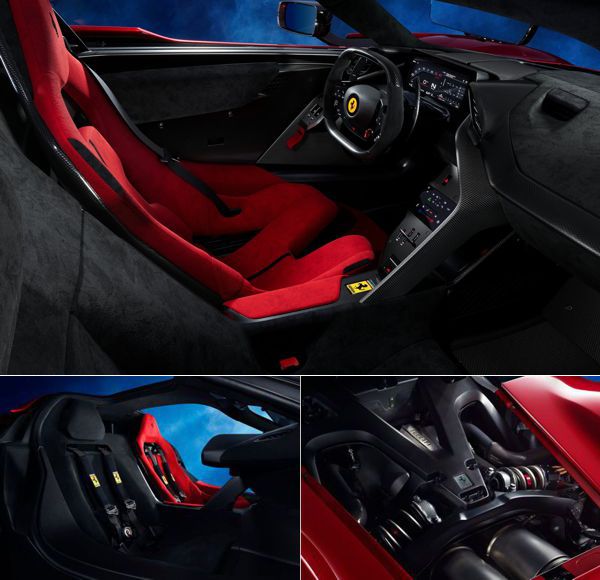 Inside, you can see the F80 is not quite as extreme as LaFerrari, because at least it offers a proper adjustable driver seat. Only the passenger seat is integrated with the carbon-fiber tub to save weight. It is positioned slightly rearward to give the driver more shoulder room, as the car's carbon-fiber tub is made very narrow to optimize airflow at both sides. However, entry and exit is quite easy, thanks to butterfly doors which open also the roof. The suspension is all-double wishbone setup, but to fit the larger active damper struts Ferrari moved them inboard, placed horizontally and actuate through pushrods. The upper wishbones are made of 3D printed titanium. There is no anti-roll bar because active suspension takes care of roll. The suspension and powertrains are mounted on aluminum subframes which are then bolted to the carbon-fiber tub through titanium screws. The car employs Michelin Cup 2 or Cup 2 R tires whose sizes are larger than LaFerrari's. The Brembo CCM-R Plus brakes are also better in every respect. As usual, the Ferrari's hypercar is sold out before public unveil. Each of the 799 cars slated to be built starting from next year costs an eye-watering £3 million before options. For comparsion with its key rivals, you can see the table below.
|
||||||||||||||||||||||||||||||||||||||||||||||||||||||||||||||||||||||||||||||||||||||||||||||||||||||||||||||||||||||||||||
| |
| 19 Oct, 2024 |
| 911 GT3
update, very minor indeed. |
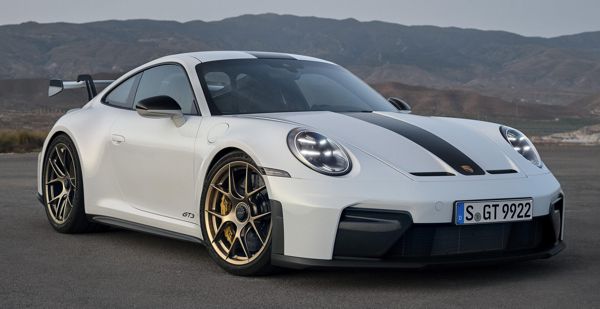 The 911 GT3 returns with a minor update. Disappointingly, performance is not improved for the first time in its history. In fact, it is actually slower than the last version. 0-60 mph takes a tenth longer and top speed drops by 5 mph for both 7-speed PDK and 6-speed manual options. Kerb weight of the PDK car rises from 1435 to 1479 kg, while manual sees similar increment to 1462 kg. You can tailor the car to a minimum 1420 kg, but that calls for lightweight options like magnesium wheels, lithium battery and CFRP bucket seats. Even in standard trim, the new car is already a good deal more expensive than the last one, selling at £157,000 instead of £128,000 a few years back.  The key reason for performance drop is the 4.0-liter engine needs to comply with new EU emission standard. This takes a pair of particulate filters and 4 catalytic converters, adding weight and hampering gas flow. Although engineers modified cylinder heads, camshafts and throttle etc., maximum power remains unchanged at 510 hp, while maximum torque drops by 15 lbft to only 332 lbft. To compensate for the reduced torque, Porsche shortens its final drive ratio by 8 percent, thus explain why top speed drops. Disappointingly, the new car has its aero package unchanged, as you can see the same rear wing and gurney flap. The only mentionable improvement is the front suspension, which gets the anti-dive geometry and aero-optimized wishbones from GT3 RS. Overall speaking, I think the current owners of GT3 need not to be worry. |
| |
| 7 Oct, 2024 |
| McLaren W1 |
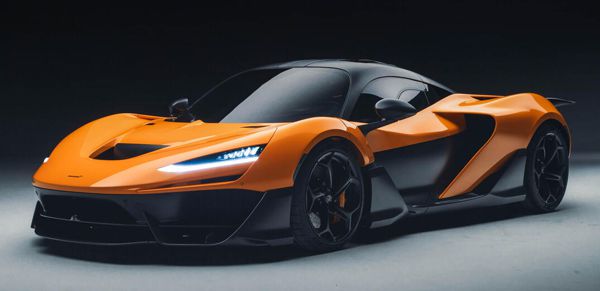 You might not notice, McLaren's last flagship hypercar, P1, is already 10 years old. Woking did build more "Ultimate series" models in between, such as Senna, Speedtail and Elva, but they are not supposed to be the successors of F1 and P1. The new W1 is. Not only carrying the number 1 nameplate, it has performance, technology and class to match its predecessors. Headline figures include 1275 horsepower and 1000 kg of downforce. If that's not enough, what about the £2 million price tag? The W1 is by no means a beefed up version of 750S. It follows the footprints of P1 to employ hybrid power, but that's not to save the world. It is purely designed for performance, without plug-in charging capability. To cut weight, the lithium-ion battery shrinks from the P1's 4.7 kWh capacity to barely 1.4 kWh. This allows it to be installed close to the floor behind the seats within the carbon-fiber monocoque, rather than stacked up vertically as in the case of P1. Again it is recharged by the engine only, so there is no strange-feeling brake pedal to worry about - a decision also likely to be driven by a tighter development budget, as Ferrari invested a lot (and successfully) in developing by-wire braking to overcome the problem. The W1 can drive by battery power alone, but for only 2 km, down from the P1's already laughable 10 km. 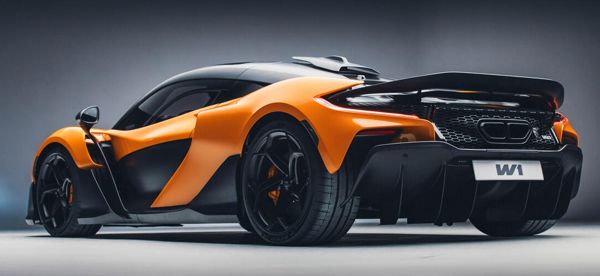 However, the W1's electric motor is more power dense. A radial flux motor mounted beside the new 8-speed DCT gearbox produces 347 hp and 324 lbft of torque, almost doubled from the P1's 179 hp and 192 lbft. Completed with its own silicone carbide inverter, the e-module weighs only 20 kg. In addition to the smaller battery, the entire electric hybrid system is claimed to be 40 kg lighter than that of the P1. Then the car must be lighter? Well, at 1399 kg dry it is actually 4 kg more than its predecessor, but by hybrid hypercar standards it is still very light. Ferrari's SF90 XX, for example, weighs 1560 kg, although it does sport a 3-motor system and all-wheel drive capability. The same goes for Lamborghini Revuelto (1772kg) and Bugatti Tourbillon (near 2 tons). The W1 remains true to McLaren's pure, rear-drive principles. Ditto the old-school hydraulic power steering it keeps using. 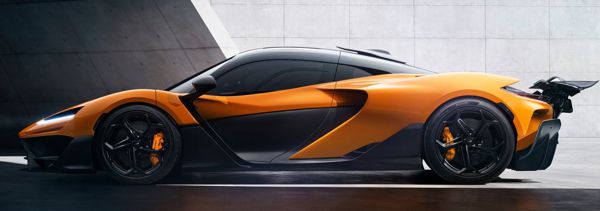 The 90-degree, flat-crank 4.0-liter twin-turbo V8 looks like a version of the existing M840T unit, but it is actually an all-new development. This is evident from its different capacity (3988 c.c. intead of 3994 c.c.), different combustion chamber size - 92mm instead of 93mm bore, 75mm instead of 73.5mm stroke - as well as dual-mode (direct + port) fuel injection (the old engine still goes without direct injection), friction-reducing plasma spray bore coating, DLC-coated finger followers for valve actuation and quicker-spooling twin-scroll turbochargers. It revs to an incredible 9200 rpm, while maximum output is equally astonishing at 928 hp and 664 lbft. The V8 is said to be slightly lighter than before and made 55mm shorter to leave space for battery. It is again built by Ricardo. In addition to the electric power, combined output is the aforementioned 1275 hp and 988 lbft. That's 359 hp and 324 lbft more than the P1. Power is sent to the rear wheels through a new 8-speed dual-clutch gearbox and a new electronic differential.  As a result, McLaren said it is the fastest accelerating car ever built by itself. 0-60, 0-124 and 0-186 mph take 2.6, 5.8 and 12.7 seconds, respectively. For comparison, the P1 did the same tests in 2.7, 6.8 and 16.5 seconds, respectively. Top speed is capped at 217 mph (350 km/h) like before though. The W1's active aerodynamic package includes a movable front flap, located at the lip spoiler, and an active rear wing which can extend rearward by 300mm and has its pitch angle adjustable. This has similar effect to an extended rear diffuser, no wonder the company called it "active long tail rear wing". In Race mode when the active aero is fully extended and ride height is dropped (by 37mm up front, 17mm rear), the car produces 1000 kg of downforce at 174 mph, 35:65 split between front and rear axle. This compares favourably with the P1's 600 kg, although the latter is achieved at 161 mph. Even the gullwing doors are chosen for optimizing aerodynamics. As they free the body side from hinges, cold air can flow unobstrusively from the front wheel arches to the rear radiators.  The carbon-fiber monocoque is called "Aerocell" as the underside of its front and rear ends rises to optimize air flow. Up front, it has aluminum crash beams but no subframe, as the suspension and steering are mounted on the monocoque. The rear subframe on which the powertrain and suspension mounted is made of square-section aluminum tubes. To save space and weight, the McLaren follows LaFerrari to have its seats molded into the carbon-fiber tub. The steering wheel and instrument pod are adjustable for reach, so is the pedal box. The footwell is raised to make space on its underside for airflow, so you sit somewhat like in a modern Formula One racer.  The double-wishbone front suspensions employ 3D-printed titanium control arms and uprights. To optimize air flow again, they have their springs and dampers moved inboard and actuate through pushrods, while the rear double-wishbone suspensions keep conventional springs and shocks. Obviously, McLaren has ditched the cross-linked hydraulic suspension system that serves its cars so well. Instead, the so-called "Race Active Chassis Control III" employs conventional adaptive dampers. Its ride height is adjustable by an active heave system consisting of crosslinks and droplinks, but it can switch between only standard ride height and the aforementioned Race mode ride height. Whether ride quality suffers as a result remains to be seen. Braking is provided by Brembo CCMR-Plus, whose discs have an additional layer of ceramic to enhance friction. The standard tires are Pirelli P Zero Trofeo RS, not especially large at 265/35ZR19 up front and 325/30ZR20 rear. The new McLaren W1 certainly looks promising in terms of performance, but it is hard to say any innovative ideas. The styling is also hardly memorable, somewhat like a Rimac Nevera from certain angles. Anyway, the company managed to have all 399 cars sold out before unveil. First delivery is slated to early 2026. |
| |
| 7 Oct, 2024 |
| Lotus
Emira Turbo SE |
 Besides the existing 400hp V6 and 360hp 2.0 Turbo, Lotus adds a third model called Turbo SE. Its AMG engine is boosted to 400 hp and 354 lbft, making it marginally quicker than the V6. 0-60 mph is quoted at 3.9 seconds, while top speed is 180 mph. However, it is available to only Asia Pacific, Middle East and Africa at the moment, ruling out Europe and America, strangely. |
| |
